If you walk into a bamboo nursery or a botanical garden and see a specimen labeled Bambusa multiplex, and another identified as Bambusa oldhamii, you might deduce that Bambusa is the genus that includes all species of bamboo. But in fact, it’s one of about 100 different genera of bamboo, which include a total of more than 1,500 bamboo species. Navigating your way through the binomial nomenclature of this massive subfamily of grasses can be challenging, but also fascinating.
With about 150 different species, Bambusa is one of the largest and most diverse genera of bamboo. It includes some of the most popular ornamental bamboo, as well as some of the most economically important species. All Bambusas are clumping types, and generally speaking, they are of tropical and subtropical origin. They are among the largest timber bamboo and also include a number of colorful, variegated and decorative bamboo. Many species are grown in milder climates in North America, where there’s no risk of severe freezing.
In the following article, we’ll take an in-depth look at this intriguing genus, its classification and its characteristics. We’ll also review several of the most common and important species of Bambusa, helping you decide if any of them might be right for your garden.
This article — first published in November 2020 and last updated in November 2024 — is part of an ongoing series about different types and species of bamboo. To learn more about this captivating botanical collection, be sure to check out some of these other informative articles.
- Running bamboo
- Genus Phyllostachys: Prolific bamboo for all climates
- Genus Chimonobambusa: Exotic Asian bamboo
- Clumping bamboo
- Genus Chusquea: Solid bamboo of the Americas
- Genus Fargesia: Clumping bamboo for cold climates
- Native bamboos of North America: Arundinaria
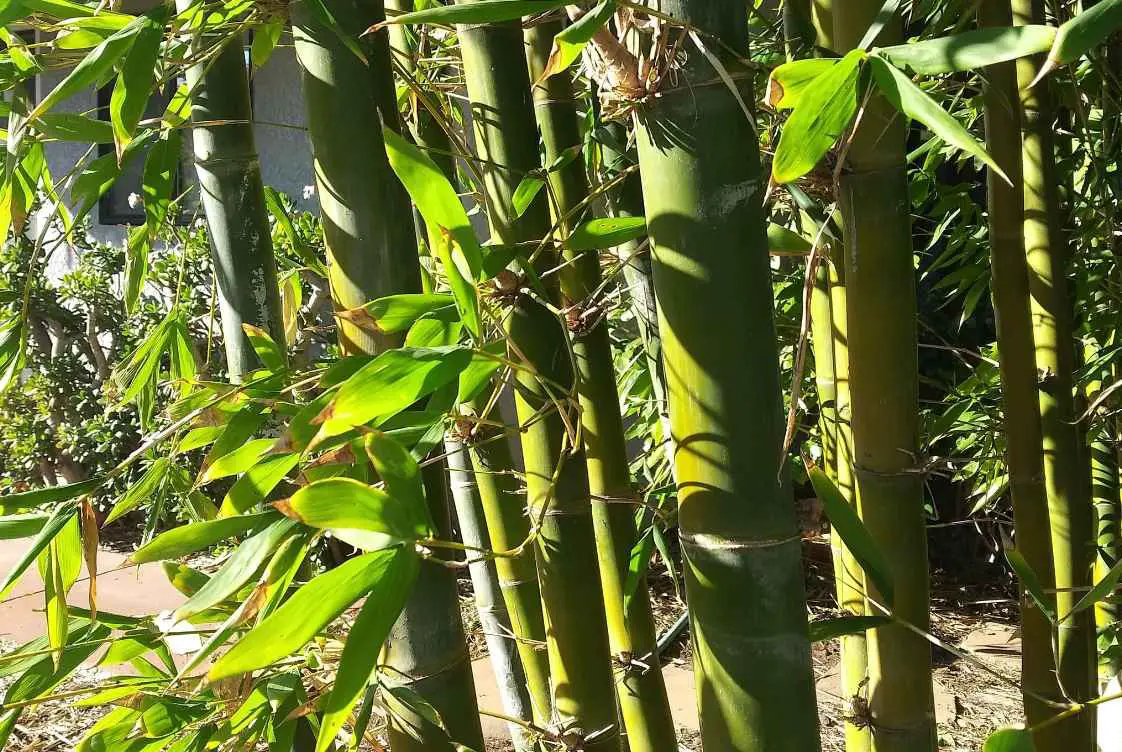
Classification of Bamboo and Bambusa
The name Bambusa, seemingly synonymous with bamboo, suggests that this is the single genus of all bamboo species. In fact, there are something like 90 to 120 different genera of bamboo, depending on which botanist you ask. Every type of bamboo, including a total of nearly 2,000 cultivars, is a grass (family Poaceae or Gramineae) and belongs in the subfamily Bambusoideae.
Conventional taxonomy further divides this subfamily into three tribes. Bambusa, like most clumping bamboo, belongs to the tribe of woody, tropical varieties, called Bambuseae. The other important tribe, Arundinarieae, includes all the temperate and predominantly running bamboos, like Phyllostachys and Pleioblastus. A third tribe, Olyreae, somewhat exotic but more closely related to Bambuseae, includes all the herbaceous (or non-woody) bamboos. These odd varieties come mainly from Central and South America.
People like to say there are two kinds of bamboo: runners and clumpers. That’s not perfectly accurate, but it’s a pretty useful simplification that doesn’t require you to keep track of all the botanical nitty gritty. So we can just say that the genus Bambusa is made up of clumpers. And like most clumping bamboos, these are generally tropical and subtropical species.

Characteristics of Bambusa
Most species of Bambusa are native to China and Southeast Asia. Many varieties also come from the Himalayas, Northern Australia, the Philippines, and New Guinea. As such, these bamboos tend to prefer warmer climates with little risk of freezing, although some species may be cold hardy to about 20º F.
For the most part, Bambusas are relatively large types of bamboo, including some impressive timber species like B. balcooa and B. bambos. As a rule of thumb, if you take a tropical bamboo out of its native habitat and grow it in a more temperate climate, it won’t achieve the same size it does in its homeland. But most of these species are suitable in hardiness zones 8 and up.
With medium to large sizes culms, and thicker than average culm walls, Bambusas provide an ideal material for building and construction. They tend to have smaller branches than many tropical giants, and small to average-sized leaves. These characteristics make the plants easy to work with and often very attractive as ornamental specimens. They usually have multiple branches at each node, but only one or two major ones.
Bambusas are one of the few bamboo genera that can be propagated by culm cuttings and branch cuttings. Check out our in-depth article on bamboo propagation to learn more about how to do that.
Species of Bambusa
There are roughly 150 species of bamboo in the genus Bambusa, so we won’t cover them all here. But the following list includes the most ornamentally popular and commercially important species, in alphabetical order.
Bambusa balcooa
This is a widely grown species in India and southern Asia, also cultivated commercially in Africa. A great choice in warmer climates, the culms are known for their thick walls, making them a superior building material. Poles can get 60-80 feet tall and 5-6 inches in diameter. Cold hardy to about 25º F, it can grow pretty well in climates like Southern California and Florida, but its thick profusion of branches makes it less-than-beautiful as ornamental. Instead, it is usually grown for biomass or building material.
Check our in-depth article on Bambusa balcooa to learn all about this remarkable species.
Bambusa bambos
One of the best species for building and construction, also known as Giant Thorny Bamboo, this variety can get up to 100 feet tall. Its poles have very thick walls, and when growing, the plant has a very dark green appearance. More difficult to grow outside of its native Southeast Asia, it’s cold-hardy only to about 30 F.
Bambusa beecheyana
Native to Southern China and Vietnam, this timber bamboo species is known for its high productivity and thick culm walls. This plant also produces unusually large shoots, which are harvested and sold for culinary use. North American farmers, namely in Florida, are studying the viability of Bambusa beecheyana as a commercial crop.
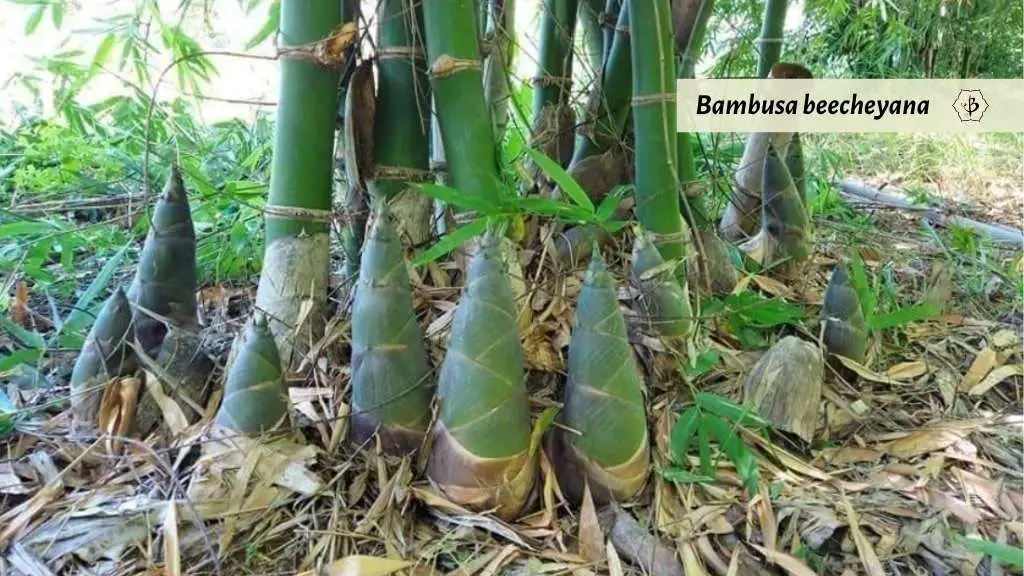
Bambusa blumeana
Native to Malaysia and Indonesia, this species is also called Thorny Bamboo or Spiny Bamboo. Lower branches can be formidable, long and sprawling with sharp thorns. An interesting and impressive species for tropical climates, the culms can get 50-70 feet tall and 4-5 inches thick. Cold tolerant to about 30º F. While the thorns make this species less desirable as an ornamental, the thick and nearly solid culms make it a popular species for commercial cultivation.
Bambusa chungii
This medium-sized species, also called Tropical Blue Bamboo, is better suited as an ornamental than a building material. Growing about 30-40 feet tall, the 1.5-2 inch thick culms come up a powdery blue color and gradually turn a deep blue-green. Tight clumps make for a stunning specimen plant, but they can also serve as an attractive privacy screen when planted together in a row. Adaptable to subtropical climates, cold hardy to about 20º F.
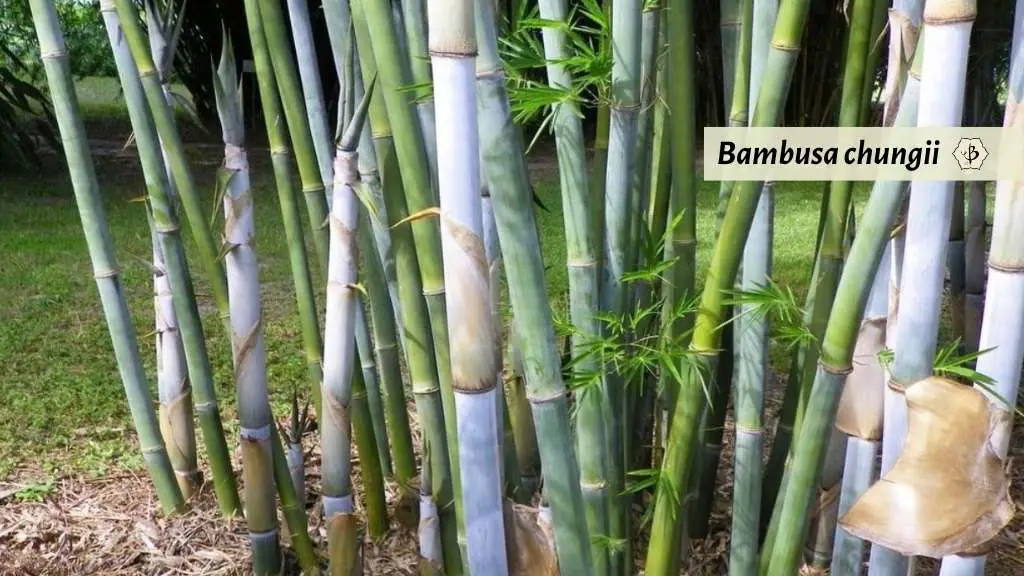
Bambusa emeiensis
A less common variety of Bambusa, it has an attractive ornamental subspecies called ‘Viridifalvus‘, more often referred to as Yin Yang or yellow striped bamboo. Clumps are tight and dense, with culms up to 30 or 35 feet tall, and about 2.5 inches in diameter.
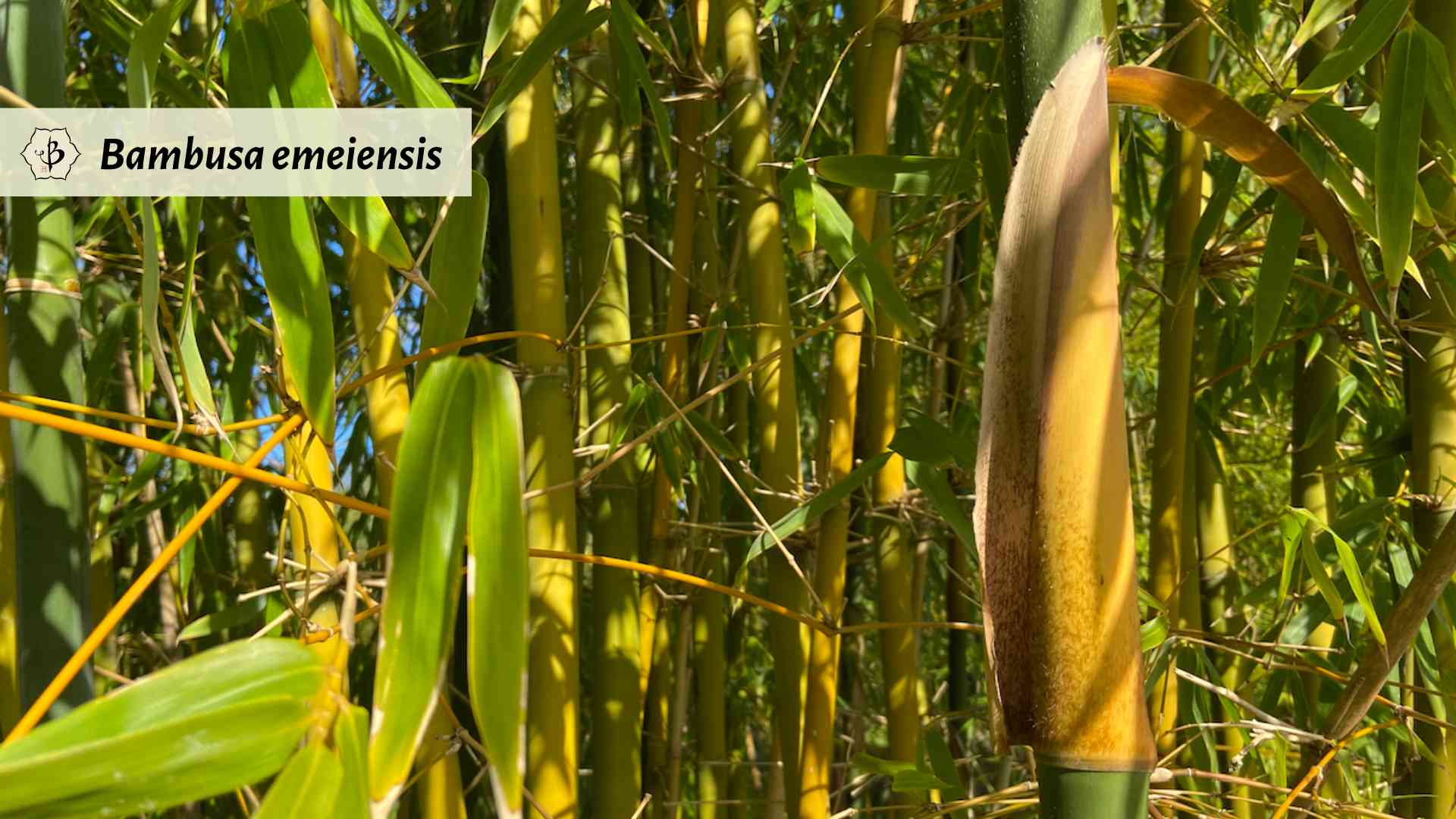
Bambusa eutudoides
Better known as Asian Lemon, this popular ornamental species is revered for the vibrant colors of its culms, bright yellow with stunning green stripes. Medium in size, the poles can get about 1 inch in diameter and 20-30 feet tall. It prefers subtropical conditions but can tolerate brief frosts in the low 20s Fahrenheit.
Bambusa flexuosa
Not to be confused with Phyllostachys flexuosa, also known as Zigzag Bamboo or Drooping Timber, this tropical clumping species has thorny canes about 20-30 feet tall.
Bambusa lako
Also called Timor Black, this beautiful black bamboo can grow up to 50 or 60 feet tall and easily 4 inches thick. New shoots come up bright green, but turn shiny, black with age. The glossy black sheen makes this an unusually attractive species, but it is a tropical variety that cannot withstand freezing temperatures. Native to the island of Timor, this is a great choice in places like Florida and Hawaii. This species is very similar, practically indistinguishable, from Java black (Gigantochloa atroviolacea), with some experts calling for it to be reclassified to the genus Gigantochloa.

Bambusa longispiculata
Native to Northeast India and Myanmar, where is generally known as Mahal Bamboo, this loosely clumping species has some ornamental value. It is better suited for erosion control and soil stabilization than for commercial harvesting. Culms grow 30 to 40 feet tall and up to about 2 inches in diameter. Not to be confused with Bambusa longinternode, widely cultivated in Africa.
Bambusa malingensis ‘Seabreeze’
This popular species from Southern China is great in a variety of conditions. As the name suggests, it’s very tolerant of winds and salty air by the seaside. Its tight clumping habit and lateral branches also make for a dense and fast-growing privacy hedge, often growing up 30 feet tall or more. Seabreeze Bamboo also happens to be one of the more drought-tolerant bamboo species. But like most varieties of Bambusa, it’s not especially cold-hardy. Temperatures below 20º F will usually result in frost damage.
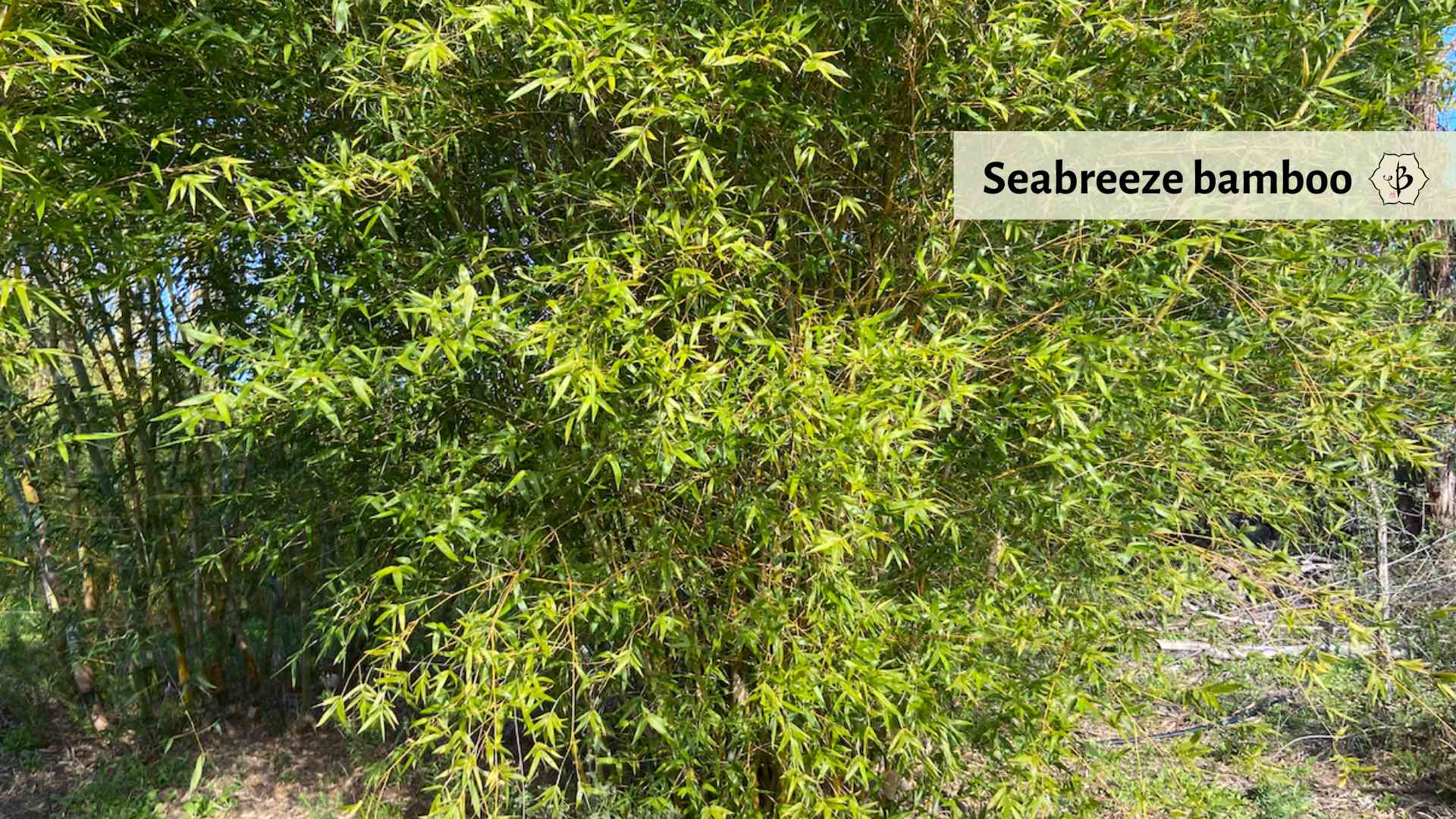
Bambusa multiplex
Bambusa multiplex has a number of cultivars, including ‘Golden Goddess’, a very popular ornamental for its manageable size and greater hardiness. They only grow about 10 feet tall, with half-inch culms, cold hardy to 15-20º F. Not to be confused with Phyllostachys aurea, also called Golden Bamboo. Another subspecies, ‘Alphonse Karr’, is among the most highly sought after of all ornamental bamboos. Distinctive green stripes on bright yellow culms give this variety a stunning appearance (see image below). Healthy plants can get 20-30 feet tall, with 1.5-2 inch canes. Tolerates temperates as low as 15-20º F.
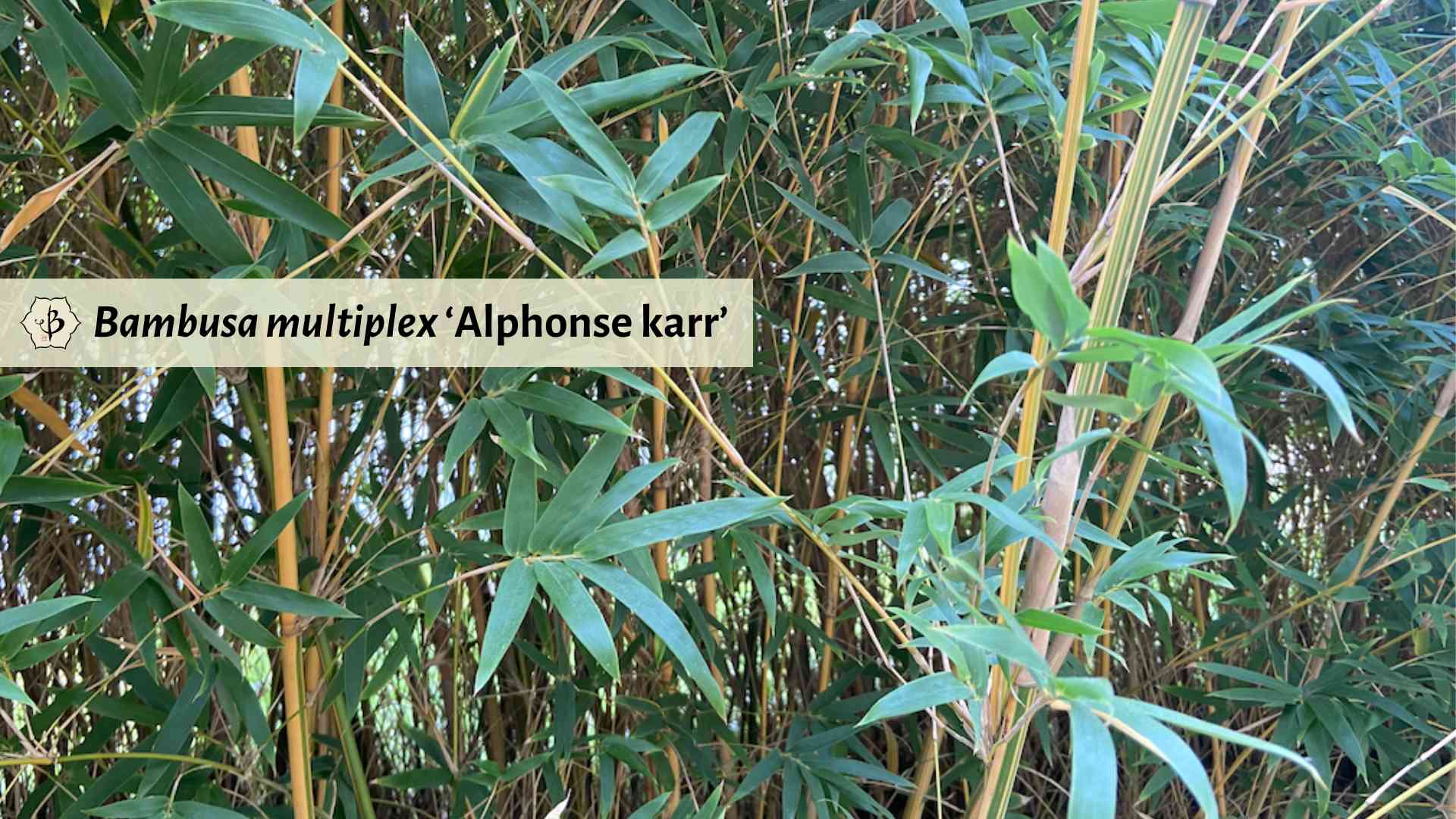
Bambusa oldhamii
Sometimes called Giant Timber Bamboo, this is one of the most popular bamboo varieties in all of North America, especially in milder climates. Oldham’s is one of the more versatile timber bamboos of this genus, hardy to about 20º F. Mature groves can get 50-60 feet tall, with 4-inch thick culms. The majestic, upright culms have a rich yellow color. These plants make for beautiful specimens or centerpieces, but are also very effective as privacy screens.
Refer to the photo near the top of the article, and check out our in-depth article on Bambusa oldhamii for complete details.
Bambusa pallida
Common in northeastern India, Pallida is tall and erect, with medium-sized culms about 2 inches in diameter, and nearly solid for the first 5 feet from the base. Strong and slender, the poles are most widely used in the agricultural sector for staking vegetables.
Bambusa pervariabilis ‘Viridistriata‘
This is an unusually striking variety of bamboo that grows in a dense clump with thick foliage and beautifully striped culms. This is a medium-sized species that grows about 30 feet high with culms around 1.5 to 2 inches thick. Branches start at the base of the plant, but pruning the lower branches is recommended to show off the colorful canes.
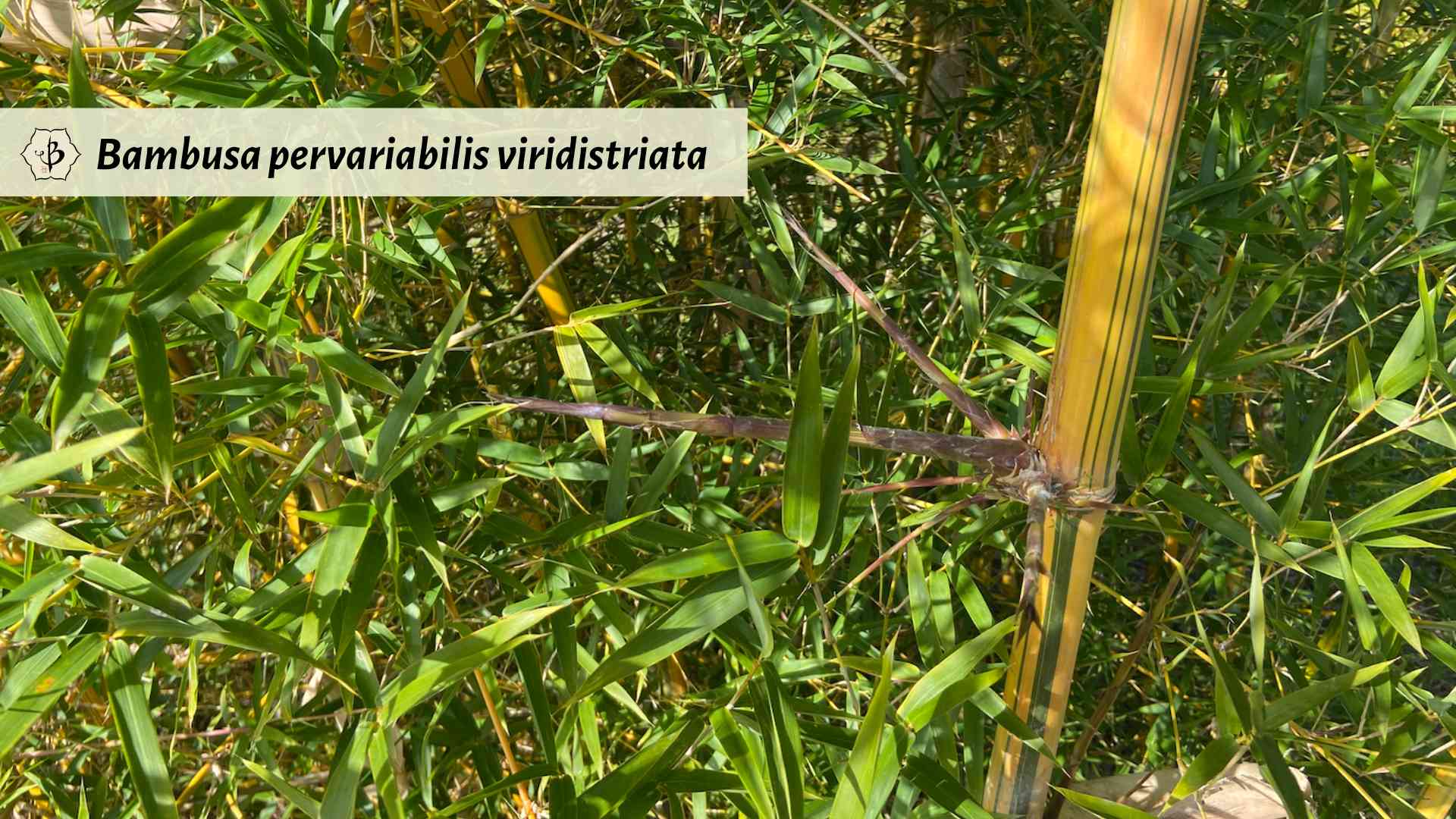
Bambusa textilis
The original species is called Weaver’s Bamboo, but the most popular cultivar of this species, ‘Gracilis’, goes by the well-deserved name of Graceful Bamboo. Tall, slender canes, in tight clumps, can get 30 feet tall, arching towards the top for a graceful aspect. Clumps are especially dense and compact, making the plant attractive and easy to manage. Thin culm walls make the poles more flexible but less useful for building. It is most widely grown as an ornamental. Bambusa textilis is also one of the most cold-tolerant of the tropical (clumping) bamboo, hardy down to 10-15º F.
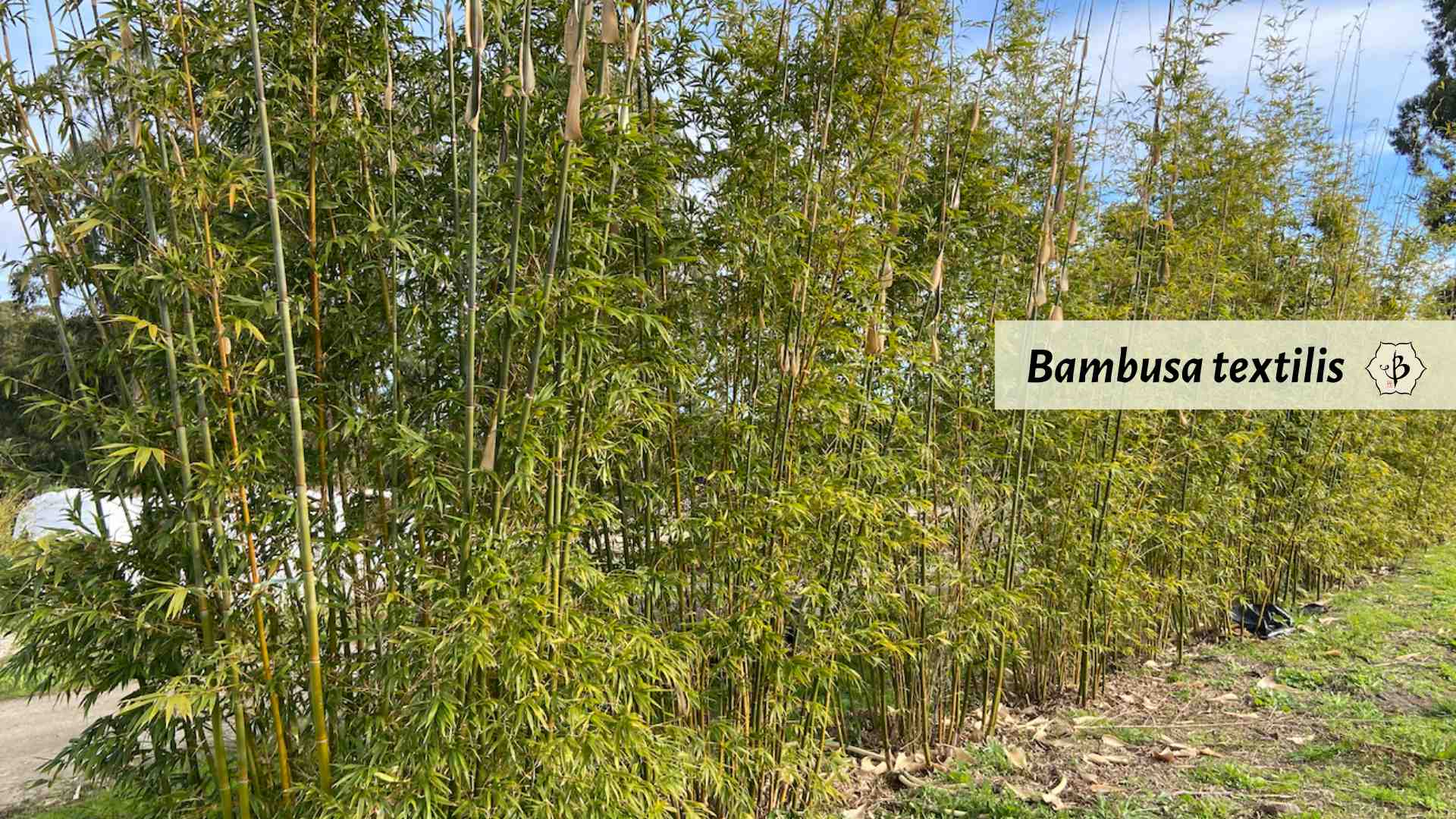
Bambu tulda
Indian Timber Bamboo, as it’s commonly known, is an important commercial species native to India and Southern China. This thornless bamboo grows in tight clumps, reaching 50 to 60 feet in height. It is especially useful in the paper-making industry. It has also been naturalized in parts of Central and South America.

Bambusa ventricosa
Better known as Buddha’s Belly Bamboo, this popular variety has bulging internodes that make for a remarkable appearance. Ideal as a specimen plant or focal point in the garden, the interesting, deep green culms can grow 20-30 feet tall and 2-3 inches thick. To encourage more bulbous internodes, you can top the culms every year and stress the plant by under-watering it slightly.
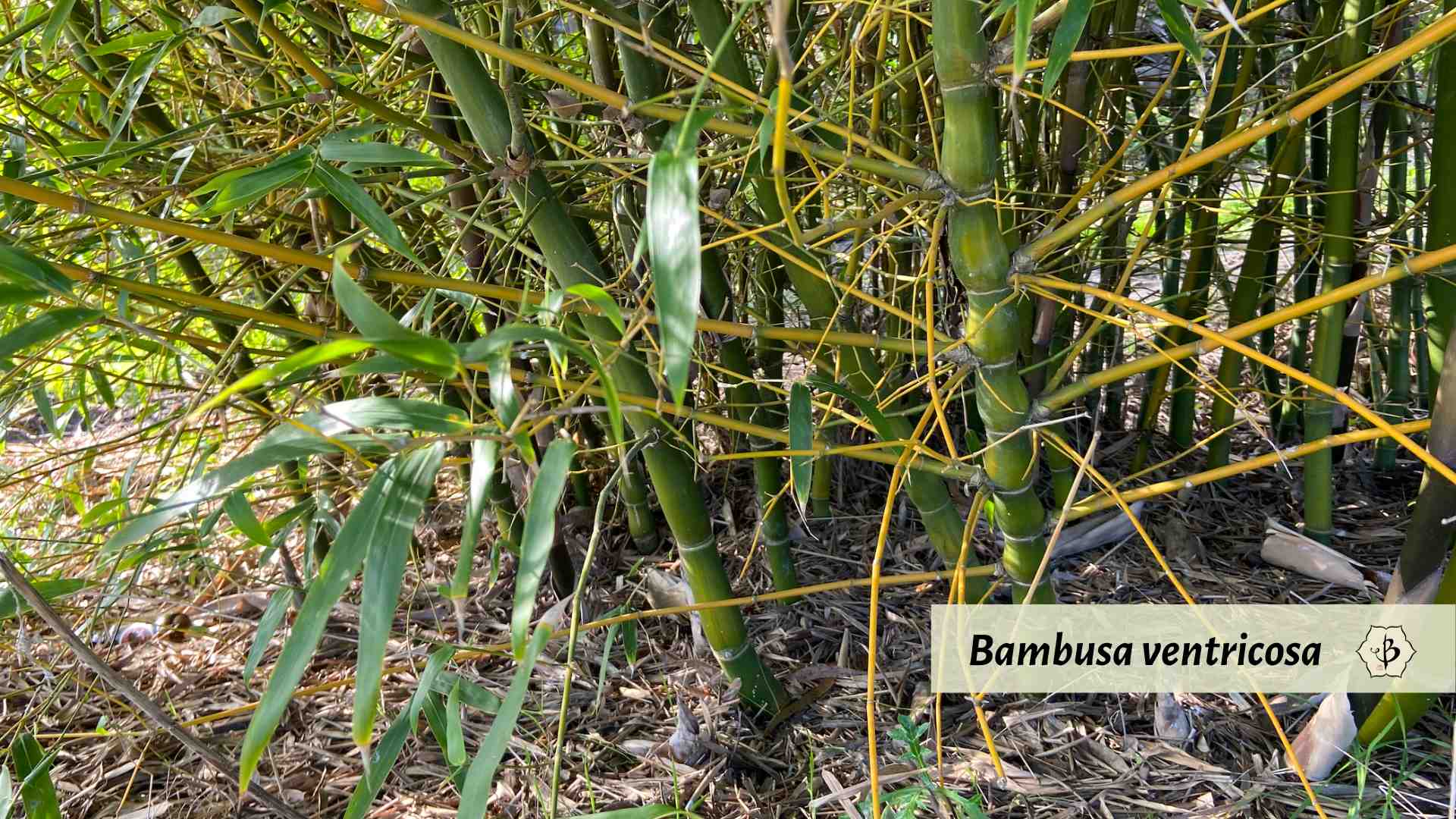
Bambusa vulgaris
Also called “common bamboo”, this species originated in China or East Asia and has proliferated all over the world. It has naturalized in many parts of Asia, and is commonly cultivated in gardens. Impressive culms grow 30-40 feet tall and up to 3 inches thick. It is sometimes called Golden bamboo, which can be confusing because that name is so widely used. Meanwhile, there is a green strain of vulgaris, particularly widespread in Africa and Latin America. The species has multiple cultivars, at least two of which are very popular as ornamentals.
Check out our article on Bambusa vulgaris to learn more.
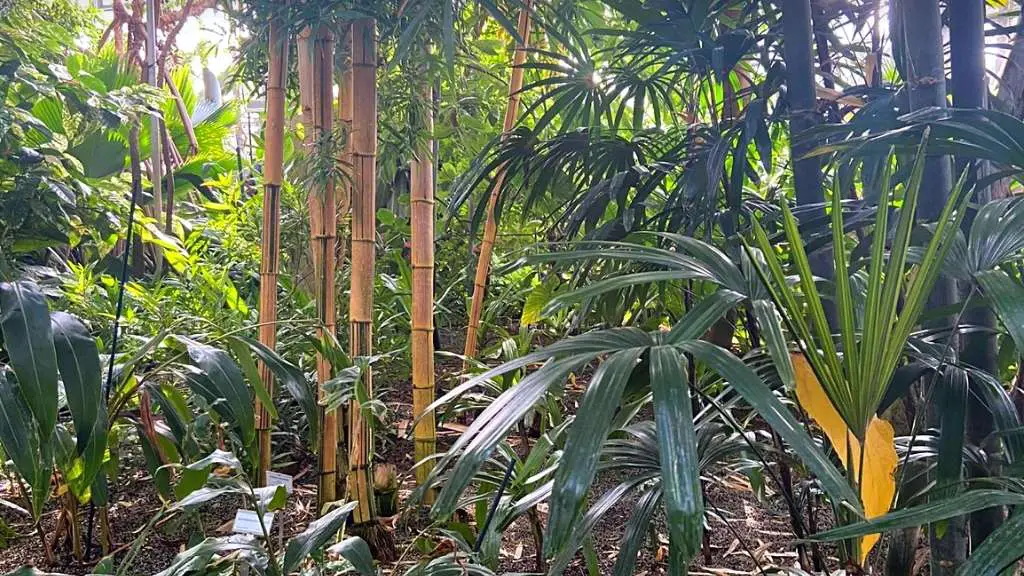
Bambusa vulgaris ‘Vittata’
B. vulgaris ‘Vittata’ or Painted Bamboo formerly went by the name Bambusa striata. Striking, colorful stripes give the culms a beautiful aspect, all the more impressive for their great size, up to 30-40 feet tall and about 3 inches thick. Not cold tolerant below 30º F, but very popular in tropical or subtropical climates.
Bambusa vulgaris cv. Wamin
Another popular subspecies, commonly known as Dwarf Buddha Belly. This compact clumping bamboo only gets about 10-12 feet tall, and it’s also adaptable for bonsai. The chubby internodes are especially striking on the smaller specimens. Woodworkers also appreciate the knobby culms for their aesthetic appeal.
Further Reading
If you’d like to learn more about growing and using bamboo, take a look at some of our most popular articles.
- Growing Bamboo: The complete how-to guide
- Best bamboo varieties for your garden
- Watering your bamboo
- Fertilizing your bamboo
- Pruning your bamboo
- Bamboo anatomy: 9 parts of the bamboo plant
FEATURED PHOTO: Clockwise from left, curling culms sheaths on Bambusa oldhamii, typical branching pattern displayed by Bambusa pervariabilis ‘Viridistriata‘, and delicate leaves of Bambusa textilis. Photos by Fred Hornaday.

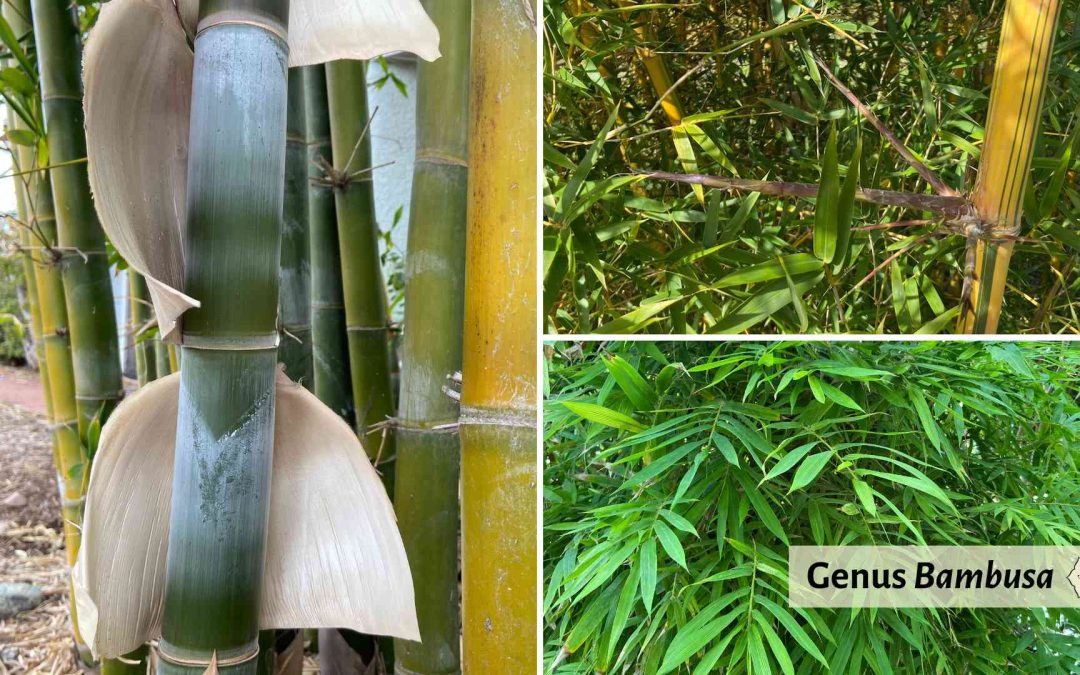


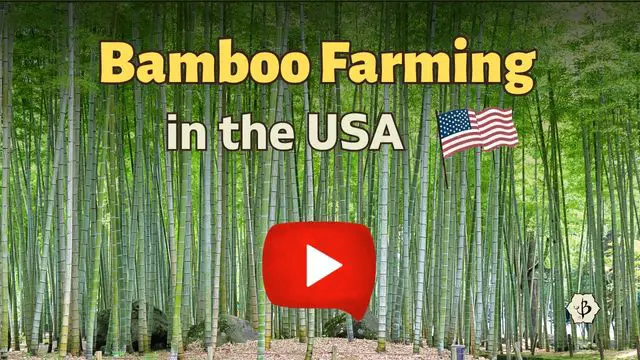




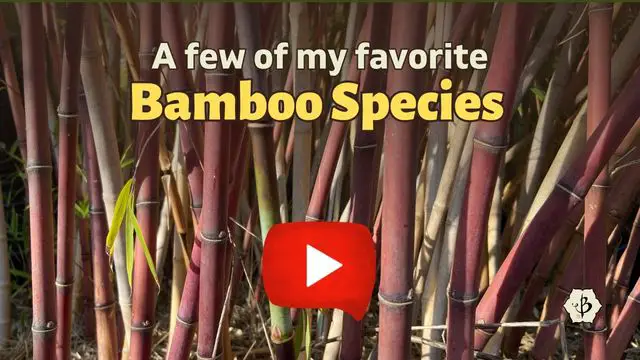
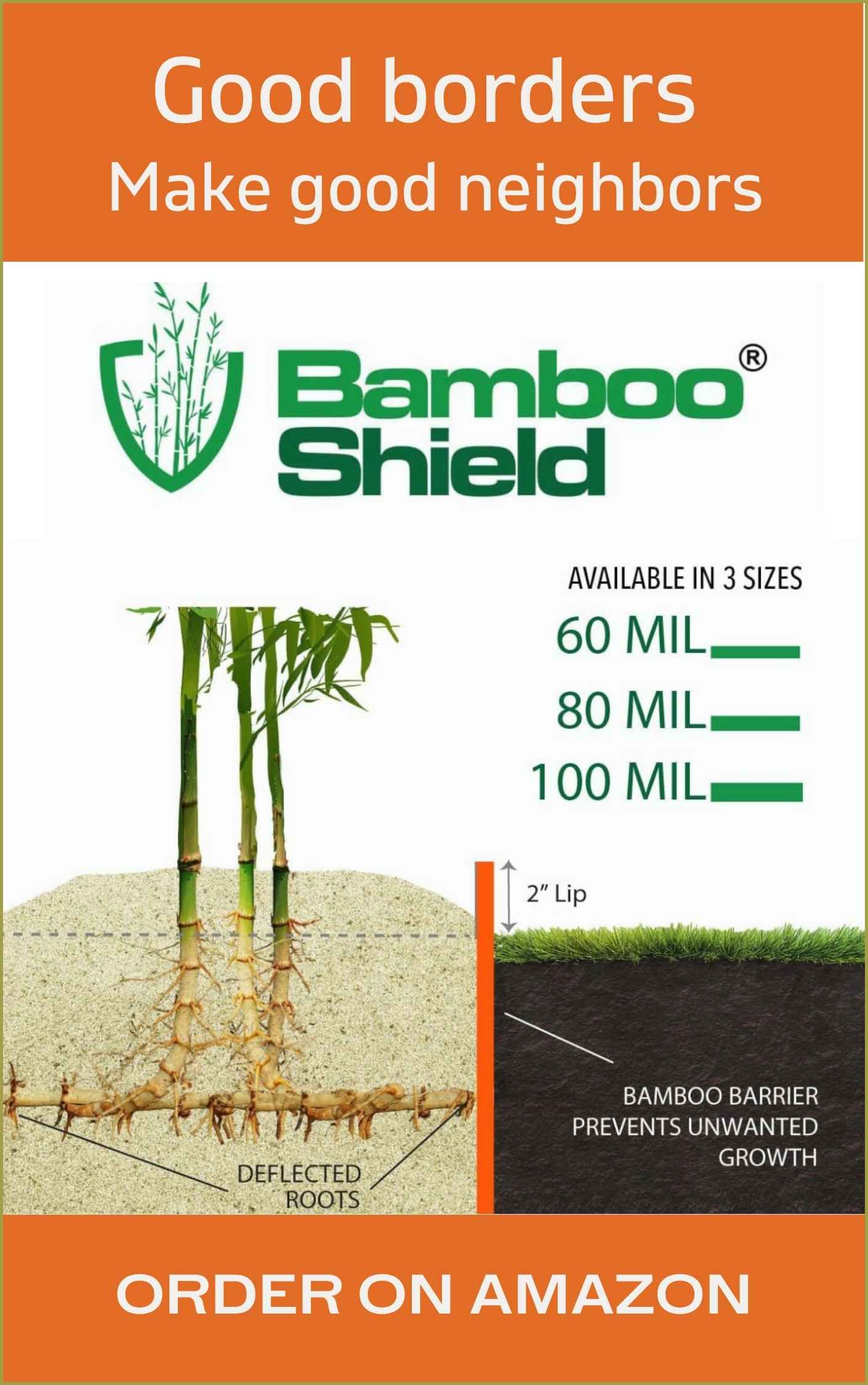

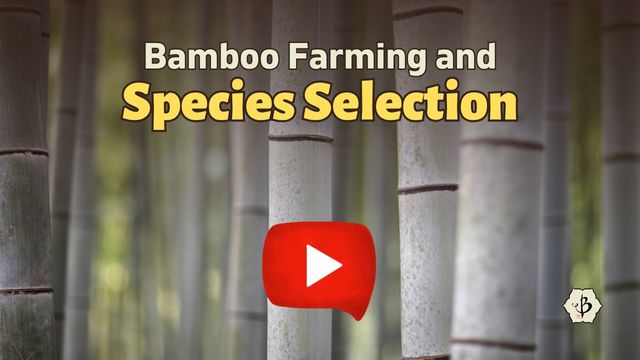

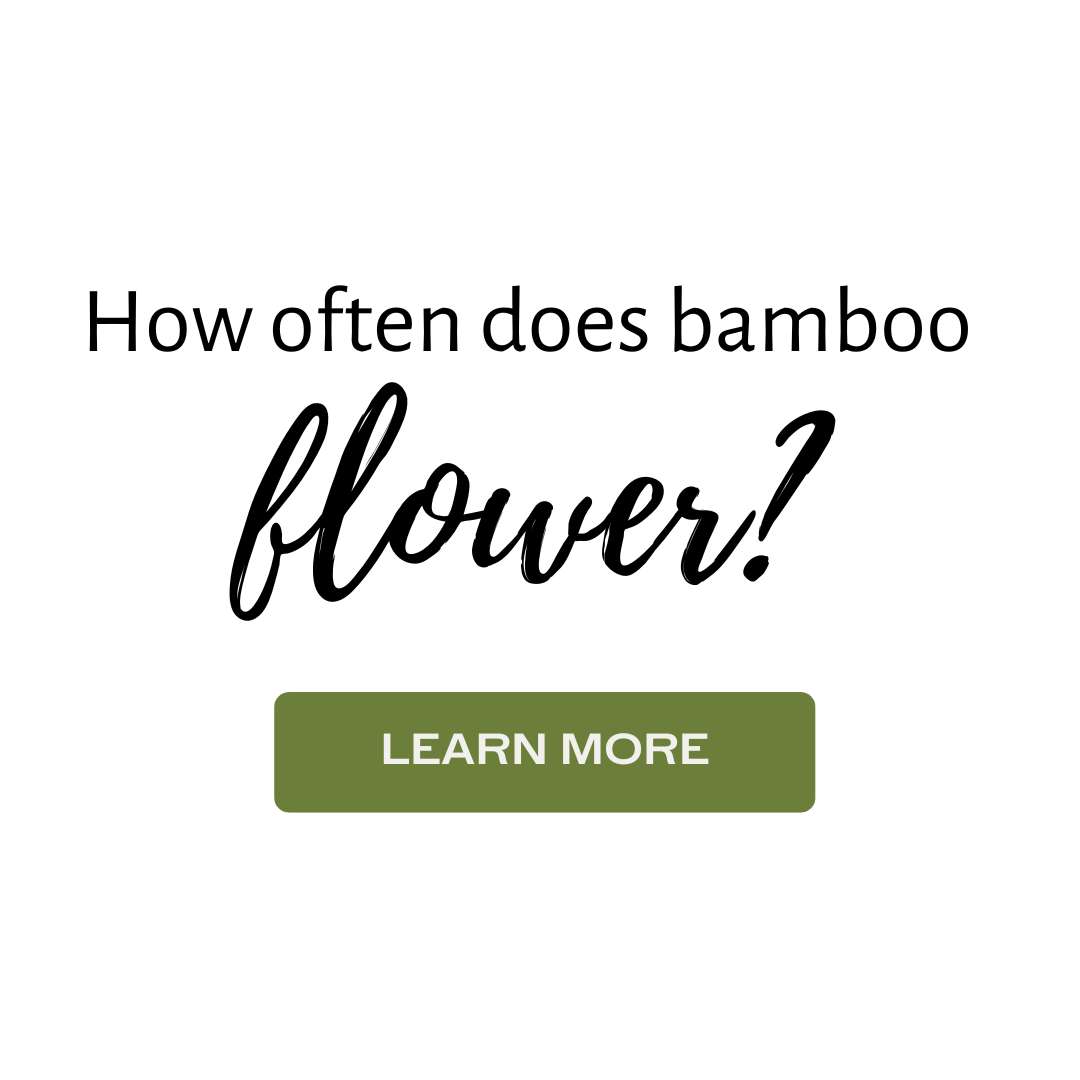
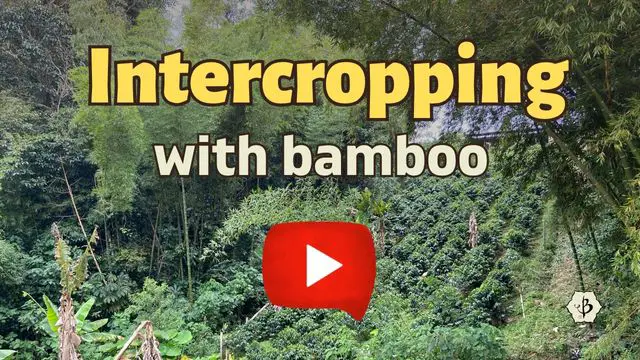


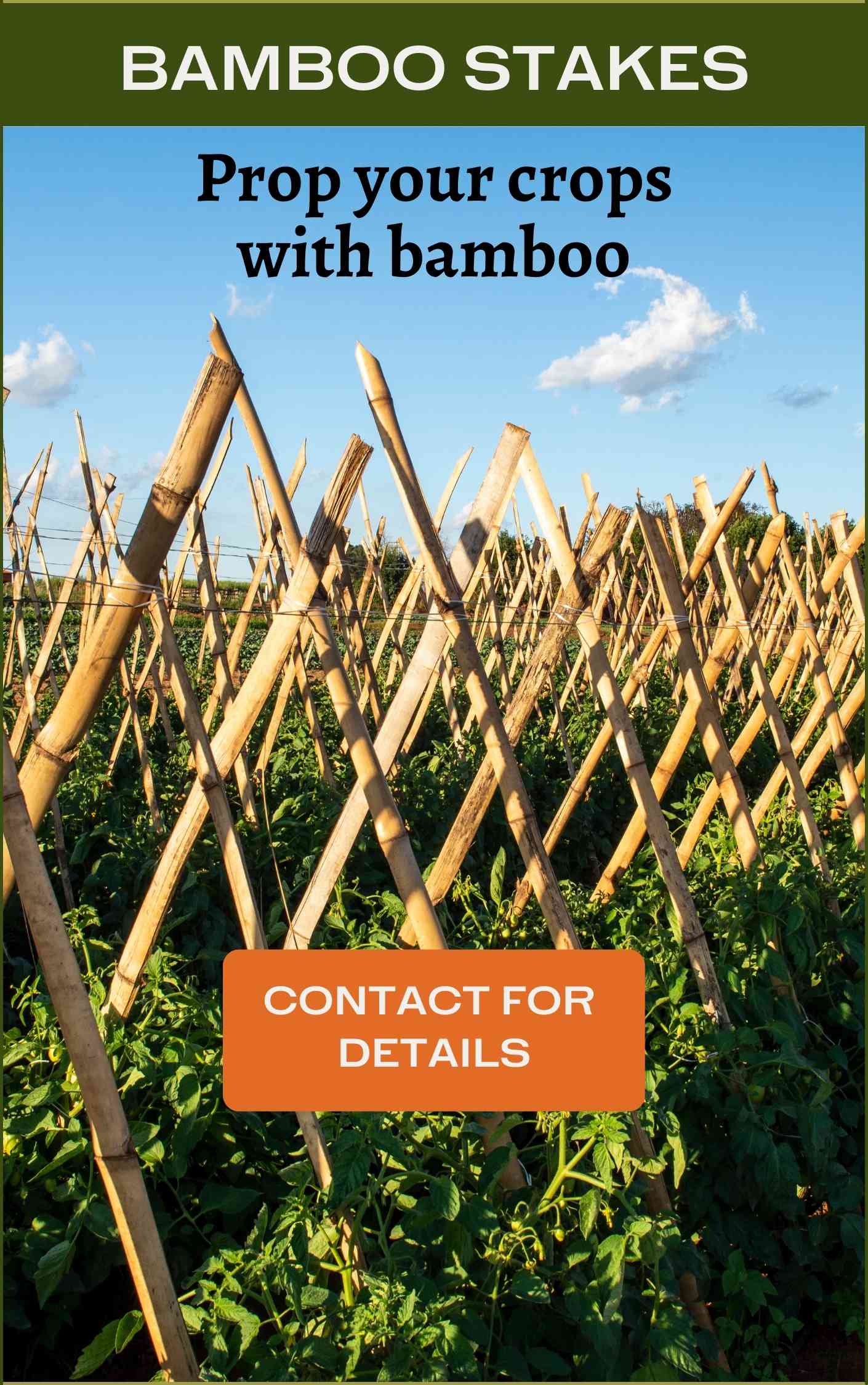

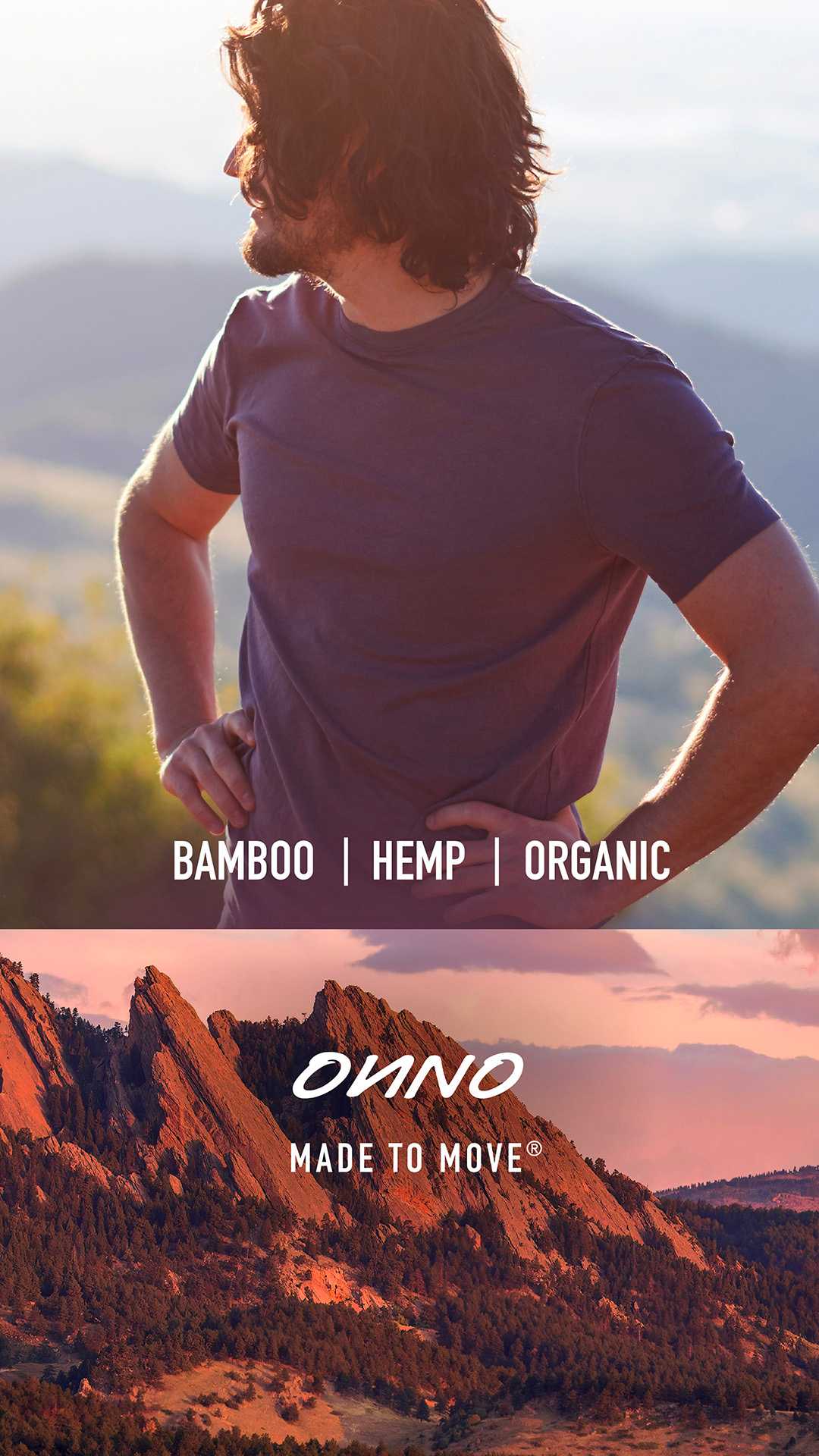





Nice Job tons of info. For tropical climate and looking into biomass fuel, which bambu species fits Better? Heard some have yields over 150tons per year?
Antecipate many thanks
Kind regards
In the tropics (India, Southeast Asia, Indonesia) Bambusa balcooa may be the best for biomass production. But 150 tons per hectare? You might get about 1/43 of that, realistically.